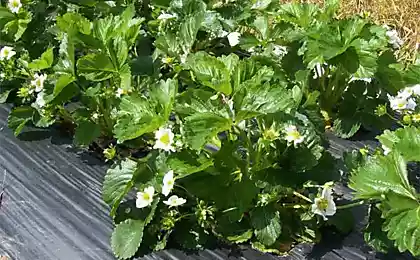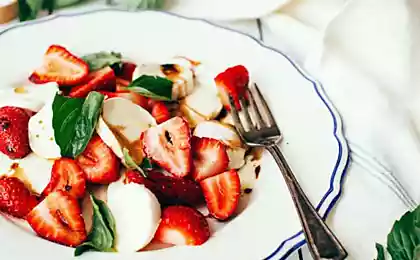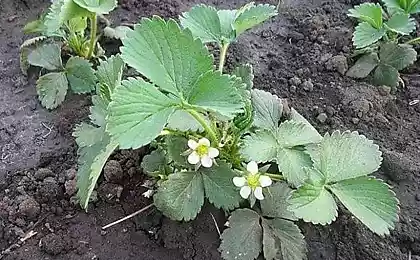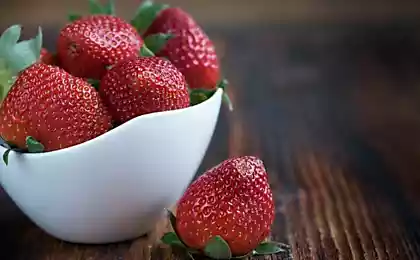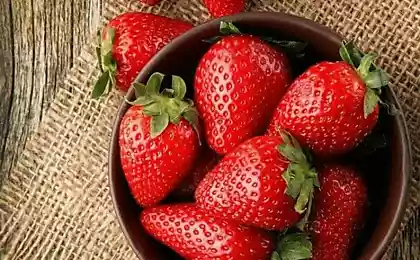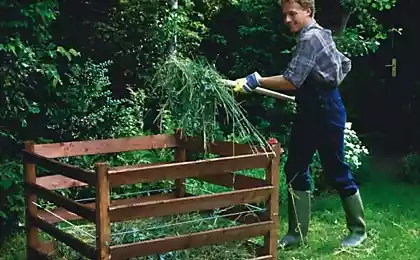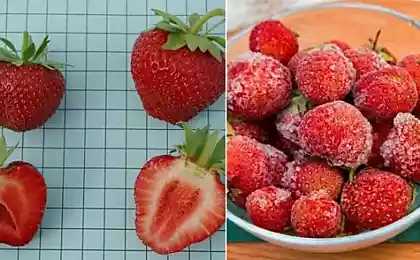172
Strawberry feeding scheme in spring
Spring has come, snow has fallen, and the ground has already dried up a little, which means it is time to feed strawberries. What fertilizers to choose for spring feeding and how to use them correctly?
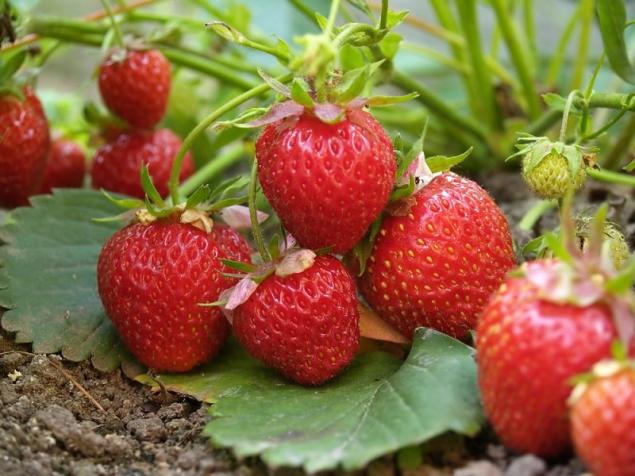
Garden strawberries are characterized by increased demands on all major macroelements (nitrogen, phosphorus and potassium). However, the most valuable of them is phosphorus, which is not only responsible for the formation of the root system of the plant, but also has a serious impact on the quantity and quality of fruits.

Nitrogen fertilizers are also important. It is this element that stimulates the active growth and development of the above-ground part of plants. Thanks to nitrogen, the leaves become strong and acquire a bright color, so the slowdown in growth and yellowing of the foliage indicates a lack of this substance in the soil.
Before feeding, it is necessary to clean the beds from last year’s garbage, and the plants themselves from dried leaves. Trimmed leaves and dry grass should be removed away, but it is better to burn to get rid of last year’s pests and diseases.

The beds should also be slightly loosened, without damaging the root system. It is desirable to update the layer of mulch, if any. For mulching suitable pine needles, sawdust or wood ash.

Spring strawberry feeding It is carried out in the morning or evening hours, as well as on moist soil (especially mineral fertilizers). The common scheme of feeding is as follows.
Possible options for nitrogen feeding
Possible options for potash-phosphorus feeding
317207
The composition of spring activities to care for garden strawberries also includes treatment from diseases and pests. One of the popular recipes for such processing we have shared before.
To get a rich harvest in autumn, you should consider when planting not only the quality of the seeds or soil condition, but also the phases of the moon. We offer readers a lunar sowing calendar for 2019.
Who would have thought that with the help of an ordinary plastic bottle and toilet paper you can grow viable seedlings at home. And how to grow: without dirt and cares for watering (at least for the first time)!

Garden strawberries are characterized by increased demands on all major macroelements (nitrogen, phosphorus and potassium). However, the most valuable of them is phosphorus, which is not only responsible for the formation of the root system of the plant, but also has a serious impact on the quantity and quality of fruits.

Nitrogen fertilizers are also important. It is this element that stimulates the active growth and development of the above-ground part of plants. Thanks to nitrogen, the leaves become strong and acquire a bright color, so the slowdown in growth and yellowing of the foliage indicates a lack of this substance in the soil.
Before feeding, it is necessary to clean the beds from last year’s garbage, and the plants themselves from dried leaves. Trimmed leaves and dry grass should be removed away, but it is better to burn to get rid of last year’s pests and diseases.

The beds should also be slightly loosened, without damaging the root system. It is desirable to update the layer of mulch, if any. For mulching suitable pine needles, sawdust or wood ash.

Spring strawberry feeding It is carried out in the morning or evening hours, as well as on moist soil (especially mineral fertilizers). The common scheme of feeding is as follows.
- First feeding
It is carried out in early spring, when the soil temperature rises to 8-10 degrees and the plant begins to wake up (new leaves begin to grow). At this point, strawberries require a lot of nitrogen to build up the green mass.
- Second feeding
It is carried out before flowering (during budding), so that strawberry berries gain weight faster and become large. The composition of the second feeding should necessarily include potash and phosphorus fertilizers, as well as a small amount of nitrogen. - Third feeding
It is carried out during flowering and fruiting of strawberries. It is recommended to use more potassium and phosphorus. Then the berries will be sweeter, stronger and more aromatic.
Possible options for nitrogen feeding
- Urea (Carbamide)
Old and time-tested fertilizer, which is 46% nitrogen, is used everywhere and is considered universal. The peculiarity of this drug is that it can be used as a means to combat plant diseases and wintering pests. For feeding, take 10-15 grams per 10 liters of water or 1 square meter.
- Ammonium nitrate
From a chemical point of view, it is ammonium nitrate. Ammonium nitrate granules are 34% nitrogen. To feed strawberries requires 15-20 grams per 10 liters of water or 1 square meter. Unlike urea, nitrate cannot be used for spraying, since an aqueous solution burns plants. It is also important that with improper storage, nitrate, unlike urea, is explosive.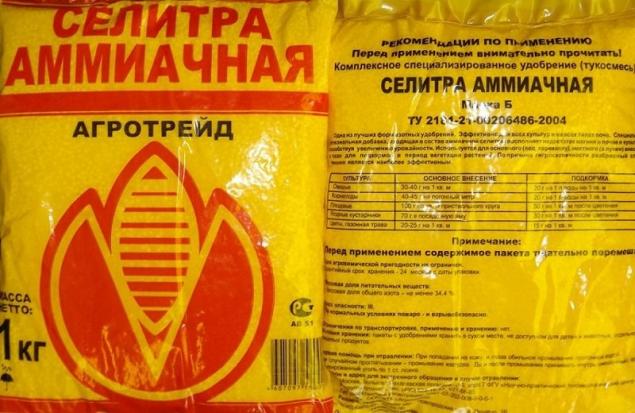
- Chicken litter infusion
Chicken manure as fertilizer is very popular. After all, many gardeners and gardeners keep poultry, and it is always at hand. The chemical composition of this feeding is rich in nutrients. It contains nitrogen, potassium, phosphorus and magnesium. Chicken dung infusion It is prepared in the proportion of 1 liter to 20 liters of water.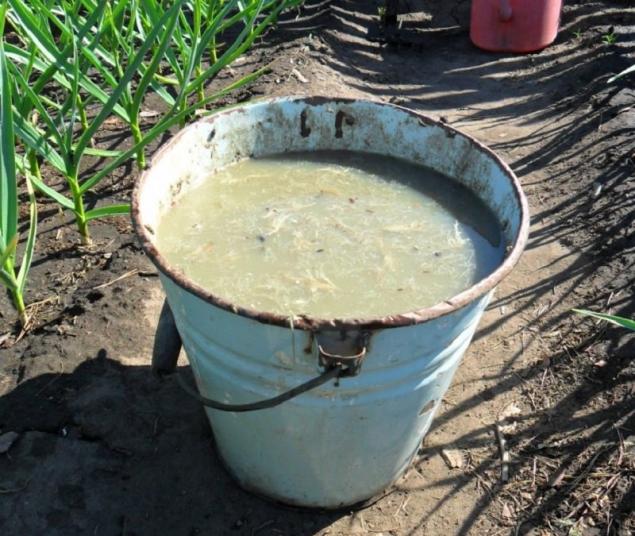
- Cow dung infusion
Cow manure is a natural source of organic substances and minerals necessary for high-quality soil fertilization. It contains 0.59% potassium, 0.5% nitrogen and 0.23% phosphorus. Infusion of cow manure, or mullet, is prepared at the rate of 1 part to 40 parts of water.
Possible options for potash-phosphorus feeding
- Nitroammophos
Suitable for feeding before and after flowering. Contains 16% nitrogen, phosphorus and potassium. The rate of application is 30-40 grams per 1 linear meter of the bed, or 1-2 tablespoons per 10 liters of water.
- Superphosphate
Simple superphosphate is an unconcentrated water-soluble phosphorus (16-20%) fertilizer containing sulfur (8-10%), magnesium (0.5%) and calcium (8-12%). Double superphosphate is a concentrated water-soluble phosphorus fertilizer containing 43-46% phosphorus. The rate of application of 20-30 grams per square meter for simple superphosphate and 1.5 times less for double.
- potassium sulfate
It contains more than 50% potassium. The rate of application is 10-15 grams per meter.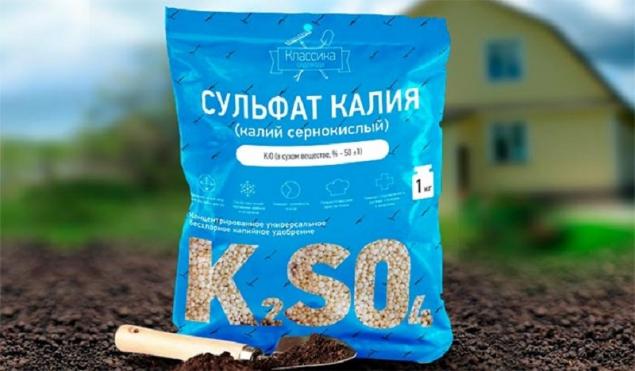
- Wood ash
Proponents of organic farming can use wood ash as potash feeding, preparing the following solution: stir 100-200 grams of ash with 10 liters of water, and then pour 1 liter of the mixture under each strawberry bush.
317207
The composition of spring activities to care for garden strawberries also includes treatment from diseases and pests. One of the popular recipes for such processing we have shared before.
To get a rich harvest in autumn, you should consider when planting not only the quality of the seeds or soil condition, but also the phases of the moon. We offer readers a lunar sowing calendar for 2019.
Who would have thought that with the help of an ordinary plastic bottle and toilet paper you can grow viable seedlings at home. And how to grow: without dirt and cares for watering (at least for the first time)!








